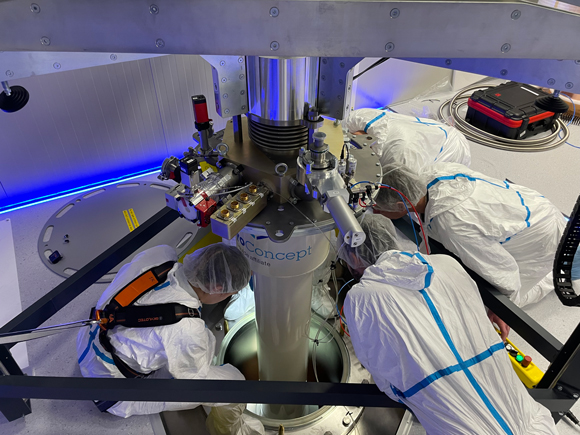
Today, at the Gran Sasso National Laboratory (INFN), the Cryogenic Observatory for Signatures seen in Next-generation Underground Searches (i.e. COSINUS) is inaugurated, marking a new frontier in the international quest to unravel one of the Universe's greatest mysteries: dark matter.
Dark matter, the mass of which is estimated to be around 85% of the Universe’s total mass, remains one of the most fascinating and elusive enigma of modern physics. As a result of the collaboration among Max Planck Institute for Physics di Munich (Germany), Technical University of Wien, Institute of High Energy Physics of the Österreichischen Akademie der Wissenschaften (Austria), National Institute for Nuclear Physics (Italy), and Helsinki Institute of Physics (Finland), COSINUS aims to clarify the controversial scenario of dark matter search trying to balance apparently contradictory experimental results.
The COSINUS experiment will host a cutting-edge detector able to measure with extreme accuracy energy released as heat by particles in crystalline materials at temperatures close to absolute zero (–273,15 °C). The core of the detector will consist of a set of sodium iodide crystals, operating at around 10 milli-Kelvin. Each crystal will be surrounded by a silicon light absorber and both of them will be monitored by superconducting thermometers. If the Universe is permeated by dark matter composed by particles, this instrument might catch the collision between these particles and the crystals, providing clear evidences of their existence.
"What makes COSINUS an experiment really unique”, says the international coordinator Florian Reindl (ÖAW e TU Wien), “is the possibility to measure at the same time the light and the heat produced by the particles in the sodium iodide crystals, which for the first time will work as cryogenic scintillating calorimeters. Matching the two measurements will allow to identify the nature of the interacting particles, reducing the background generated by particles different from dark matter ones.”
The experiment is housed in the biggest underground laboratory of the world, the Gran Sasso National Laboratory, located in a mountain massif at about hundred km from Rome. Under a 1400 meters layer of rock, far from cosmic ray interferences, COSINUS will have the chance to observe phenomena otherwise impossible to detect.
The inauguration of COSINUS experimental facility represents a significant step in the international scientific research on dark matter. The first results of the measurements, expected by 2026, could definitely transform our comprehension of the Universe.
REIS - 18.04.2024


